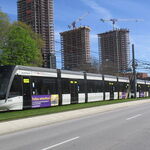steveintoronto
Superstar
As per "privatizing"...there is a case to be made for this, but not for VIA in it's entirety. VIA, in its nebulous mandate, serves at least two roles, one of them to service areas of the nation that would otherwise be 'disconnected', and to act as a provider of corridor service for select areas of the nation, the obvious example being London-Toronto-Ottawa-Montreal-Quebec City. (Some claim the Maritimes, but I digress).
THAT portion of VIA could, and maybe should, be run as a separate entity from the money losing lines. And this then entices private enterprise to participate in "VIA Corridor" for the investment it so badly needs. I don't think anyone disagrees that this aspect of VIA is badly underfunded.
Desjardin-Siciliano would be the first to agree, it's not just HFR, but the Corridor altogether that needs fresh blood, vitality and funding. It can and would make a 'surplus' if remaining on gov't books, or a 'profit' if run off the books as a corporation, but it needs infusion of cash.
And since there's no sign of the present regime in Ottawa forthcoming on that, the least they can do is to re-organize VIA, and allow The Corridor to 'open shop'. And that 'storefront' should be in the Infrastructure Bank.
THAT portion of VIA could, and maybe should, be run as a separate entity from the money losing lines. And this then entices private enterprise to participate in "VIA Corridor" for the investment it so badly needs. I don't think anyone disagrees that this aspect of VIA is badly underfunded.
Desjardin-Siciliano would be the first to agree, it's not just HFR, but the Corridor altogether that needs fresh blood, vitality and funding. It can and would make a 'surplus' if remaining on gov't books, or a 'profit' if run off the books as a corporation, but it needs infusion of cash.
And since there's no sign of the present regime in Ottawa forthcoming on that, the least they can do is to re-organize VIA, and allow The Corridor to 'open shop'. And that 'storefront' should be in the Infrastructure Bank.





